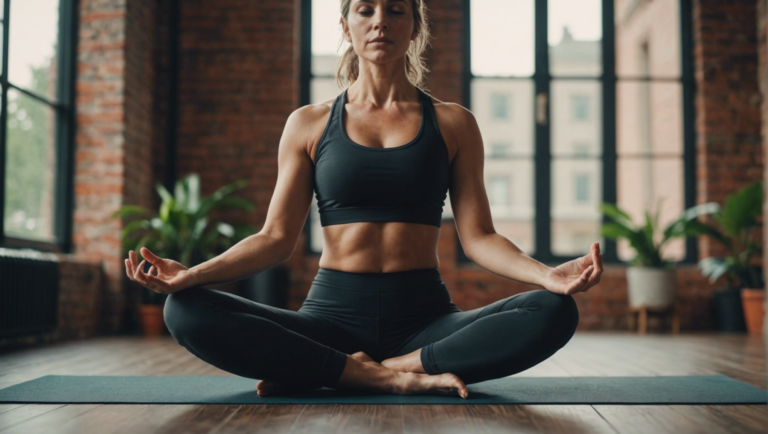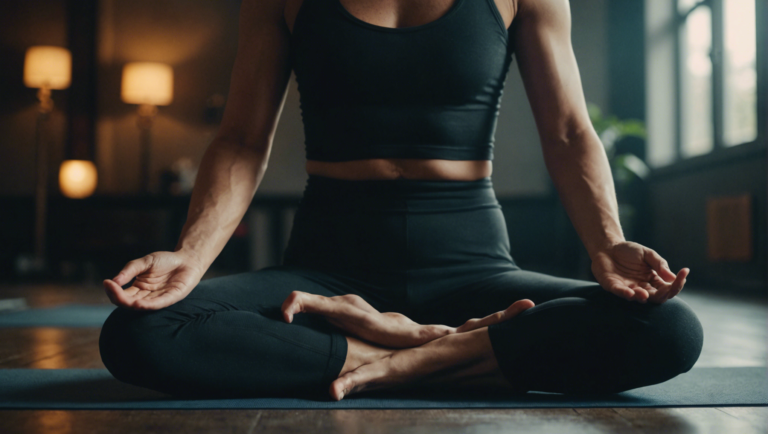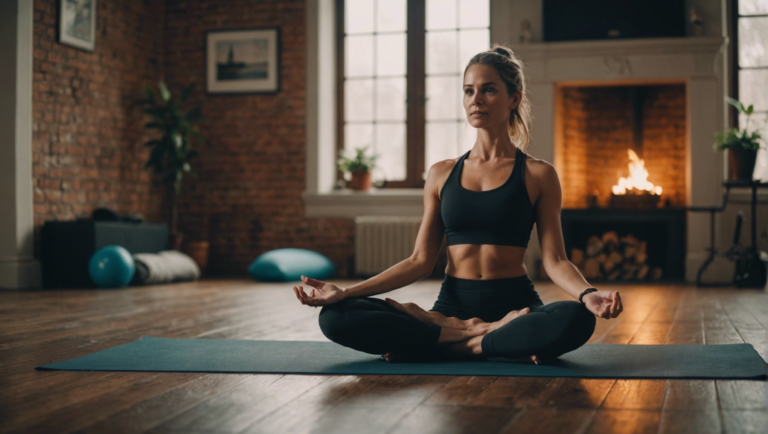Essential Guidelines On How To Get Good At Yoga
Understanding the Fundamentals of Yoga Practice
Yoga is a holistic discipline that integrates physical postures, breathing techniques, meditation, and mindfulness to promote overall well-being and inner peace. By understanding the fundamentals of yoga practice, individuals can unlock the numerous benefits that this ancient tradition offers. Whether you are a beginner or seasoned practitioner, grasping the essential guidelines can enhance your yoga journey significantly.
The Importance of Proper Alignment
Proper alignment is the cornerstone of a safe and effective yoga practice. Aligning your body correctly in each posture helps prevent injuries, improves posture, and allows for the optimal flow of energy throughout the body. Paying attention to alignment cues from your yoga instructor and using props such as blocks and straps can help you achieve the proper alignment in each pose.
Focus on Breath Awareness
Breath awareness is a fundamental aspect of yoga that connects the body and mind. In yoga practice, each movement is synchronized with the breath to create a sense of flow and presence. By focusing on your breath, you can deepen your practice, calm the mind, and enhance the mind-body connection. Remember to take slow, mindful breaths throughout your practice to harness the full benefits of yoga.
Cultivate Mindfulness and Presence
Yoga is not just about physical postures; it is also a practice of mindfulness and presence. Being fully present on the mat allows you to experience each moment without judgment or distraction. Cultivate mindfulness by bringing your awareness to the sensations in your body, the fluctuations of your mind, and the rhythm of your breath. mindfulness into your practice can help reduce stress, increase self-awareness, and promote emotional well-being.
Gradual Progression and Patience
Getting good at yoga takes time, consistency, and patience. It is essential to approach your practice with a growth mindset and embrace the journey, rather than focusing solely on the end goal. Allow yourself to progress gradually, honoring your body’s limitations and listening to its cues. Remember that yoga is a personal practice, and progress is measured by how you feel in your body and mind, rather than how advanced your poses are.
Seek Guidance and Continuous Learning
Yoga is a vast and diverse practice with roots dating back thousands of years. Seek guidance from experienced yoga teachers, attend workshops and retreats, and delve into the philosophy and history of yoga to deepen your understanding. Embrace the mindset of a lifelong learner, staying open to new experiences and insights that can enrich your practice.
By grasping the essential guidelines of yoga practice, individuals can embark on a transformative journey that nurtures their physical, mental, and spiritual well-being. Through proper alignment, breath awareness, mindfulness, patience, and continuous learning, you can cultivate a fulfilling and sustainable yoga practice that resonates with your true self.
Balancing Strength and Flexibility in Yoga
Maintaining a good balance between strength and flexibility is crucial in the practice of yoga. Both aspects are equally important and play complementary roles in achieving overall well-being and physical fitness. By focusing on building strength and improving flexibility simultaneously, practitioners can enhance their yoga practice, prevent injuries, and experience a deeper connection between mind and body.
The Significance of Strength in Yoga Practice
Strength forms the foundation of a solid yoga practice. Engaging and strengthening muscles not only supports the body in performing various poses but also helps in maintaining proper alignment and stability. Building strength in yoga involves targeting different muscle groups through a variety of poses and sequences. In addition to enhancing physical strength, yoga also contributes to mental strength by fostering discipline, focus, and resilience.
Strength-Building Poses
Certain yoga poses are particularly effective in building strength throughout the body. Poses such as Plank, Chaturanga Dandasana, Warrior series, and Boat pose engage multiple muscle groups simultaneously, promoting overall strength development. These poses help in toning muscles, improving endurance, and increasing core stability. By incorporating strength-building asanas into your practice regularly, you can progress steadily towards achieving a balanced level of strength in your yoga practice.
The Importance of Flexibility in Yoga Practice
Flexibility is equally essential in yoga as it allows for a greater range of motion, enhances muscle elasticity, and promotes overall joint health. Improving flexibility helps in preventing injuries, reducing muscle tension, and enhancing posture. Flexibility in yoga is not just about touching your toes but about creating space within the body to move freely and comfortably.
Flexibility-Enhancing Poses
Yoga offers a wide range of poses that focus on increasing flexibility in different parts of the body. Poses like Forward Fold, Downward-Facing Dog, Pigeon Pose, and Cobra Pose target specific muscle groups and promote flexibility in the hamstrings, hip flexors, shoulders, and spine. Practicing these poses regularly can help in releasing tension, improving mobility, and gradually increasing flexibility throughout the body.
Finding the Balance
Achieving a balance between strength and flexibility in yoga is about understanding your body’s needs and limitations. It is essential to listen to your body, respect its boundaries, and gradually work towards improving both strength and flexibility over time. Balancing strength with flexibility allows for a holistic and sustainable yoga practice that benefits not only the body but also the mind and spirit.
Balancing strength and flexibility in yoga is key to unlocking the full potential of your practice. By focusing on both aspects simultaneously, you can cultivate a well-rounded practice that enhances physical fitness, mental clarity, and overall well-being. Incorporate a mix of strength-building and flexibility-enhancing poses into your practice to experience the transformative power of yoga on a deeper level. Strive for a harmonious blend of strength and flexibility to nurture a balanced, sustainable, and fulfilling yoga journey.
The Importance of Breath Control in Yoga
Breath control plays a crucial role in the practice of yoga, serving as a foundation for various poses and meditation techniques. The ability to regulate the breath not only enhances the physical aspects of yoga but also deepens the mental and spiritual dimensions of the practice. Understanding the importance of breath control in yoga is essential for practitioners looking to advance in their practice and experience the full benefits of this ancient discipline.
Importance of Breath Control for Mind-Body Connection
In yoga, the breath is considered the link between the body and the mind. By focusing on the breath, practitioners can achieve a state of inner balance and harmony. The controlled breathing techniques, known as pranayama, help to calm the mind, reduce stress, and increase mental clarity. By synchronizing movement with breath, yoga practitioners can enhance their awareness of the present moment and cultivate a deep sense of mindfulness.
Enhancing Physical Performance Through Breath Control
Proper breath control is essential for optimizing physical performance in yoga. When you coordinate your movements with your breath, you can flow more smoothly between poses, improve your endurance, and build strength more effectively. Deep, diaphragmatic breathing assists in oxygenating the blood, which nourishes the muscles and organs, allowing for enhanced flexibility and stamina during yoga practice.
Cultivating Emotional Resilience and Stress Relief
Breath control in yoga is a powerful tool for managing emotions and promoting mental well-being. By practicing slow, steady breathing techniques, such as ujjayi pranayama, individuals can soothe the nervous system, reduce anxiety, and promote relaxation. The rhythmic nature of controlled breathing helps to regulate emotions, leading to a greater sense of emotional balance and stability both on and off the mat.
Developing Self-Awareness and Presence
Conscious breathing in yoga fosters self-awareness and presence in the moment. By anchoring your attention to the breath, you can quiet the fluctuations of the mind and connect with your inner self. This heightened sense of awareness allows practitioners to observe their thoughts and emotions without judgment, fostering a state of inner peace and contentment. Through regular breath-centered practice, individuals can cultivate a deeper connection to themselves and the world around them.
Integrating Breath Control Into Your Yoga Practice
To harness the benefits of breath control in yoga, it is essential to practice pranayama techniques regularly. Start by focusing on deep, slow inhalations and exhalations during asana practice. Experiment with different breathing patterns, such as alternate nostril breathing or kapalabhati breath, to discover what works best for you. Remember to maintain a relaxed awareness of your breath throughout your practice and allow it to guide you into a state of flow and presence.
Mastering breath control in yoga is fundamental to unlocking the full potential of your practice. By embracing the power of conscious breathing, you can deepen your mind-body connection, enhance physical performance, cultivate emotional resilience, and foster self-awareness. Incorporate breath-centered techniques into your yoga routine to experience a profound transformation in your practice and in your life.
Incorporating Meditation into Your Yoga Routine
To truly deepen your yoga practice, incorporating meditation can be a transformative addition to your routine. By merging the physical practice of yoga with the mental discipline of meditation, you can achieve a more holistic approach to overall well-being. Here are some essential guidelines on how to seamlessly integrate meditation into your yoga sessions.
Benefits of Combining Yoga and Meditation
Yoga and meditation are like two wings of a bird – they work together harmoniously to help you soar to new heights of spiritual and physical wellness. While yoga primarily focuses on the body through various poses and breathing techniques, meditation hones in on the mind, allowing for mental clarity, emotional balance, and inner peace. When these two practices are combined, they create a synergistic effect that enhances the overall benefits.
Setting the Intention
Before you begin your yoga practice, take a moment to set an intention for your meditation. This could be anything from cultivating gratitude and compassion to finding inner strength and clarity. By setting a specific intention, you provide a focal point for your meditation practice, guiding your thoughts and energy towards a particular goal.
Start with Breath Awareness
One of the simplest ways to incorporate meditation into your yoga routine is through breath awareness. As you move through your yoga poses, pay close attention to your breath – the inhales and exhales, the rise and fall of your chest, the sensation of air moving in and out of your body. By focusing on your breath, you anchor yourself in the present moment, quieting the fluctuations of the mind.
Mindful Movement
Another effective way to intertwine meditation with yoga is to practice mindful movement. Instead of rushing through each pose, move deliberately and with full awareness. Notice the sensations in your body, the alignment of your limbs, and the connection between movement and breath. By moving mindfully, you cultivate a deep sense of presence and mindfulness throughout your practice.
Savasana Meditation
The final relaxation pose in a yoga practice, Savasana (Corpse Pose), offers a perfect opportunity for meditation. As you lie down on your mat, close your eyes and bring awareness to each part of your body, consciously releasing any tension or stress. Allow your mind to settle into a state of calm and stillness, observing your thoughts without judgment. Savasana meditation is a wonderful way to integrate meditation into your yoga routine and fully absorb the benefits of your practice.
Closing Thoughts
By integrating meditation into your yoga routine, you can elevate your practice to a profound level of physical, mental, and emotional well-being. Whether you choose to focus on breath awareness, mindful movement, setting intentions, or practicing Savasana meditation, the key is to approach your practice with openness, mindfulness, and dedication. By following these essential guidelines, you can cultivate a deeper connection between your body, mind, and spirit, ultimately reaping the rich rewards of a harmonious yoga and meditation practice.
Tips for Progressing in Advanced Yoga Poses
Understand the Foundations First
When aiming to progress in advanced yoga poses, it’s crucial to first understand and master the foundational poses. Building a strong base through regular practice of basic poses such as Downward Facing Dog, Warrior I, and Plank Pose will not only help in developing strength and flexibility but also enhance your overall understanding of body alignment and breathing techniques.
Cultivate Mindfulness and Patience
Progressing in advanced yoga poses requires not only physical strength but also mental focus and patience. By cultivating mindfulness through practices like meditation and pranayama, you can develop the ability to stay present in the moment, listen to your body, and move deeper into challenging poses with ease.
Listen to Your Body
One of the most important aspects of advancing in yoga is learning to listen to your body. Each individual’s body is unique, and what works for one person may not work for another. Pay attention to how your body responds to different poses, and honor its limitations. Pushing yourself too hard can lead to injury, so always practice with awareness and sensitivity to your body’s needs.
Incorporate Strength and Flexibility Training
To progress in advanced yoga poses, it’s essential to work on both strength and flexibility. Incorporate a balanced mix of yoga asanas that focus on building muscle strength, such as arm balances and inversions, as well as poses that improve flexibility, like backbends and hip openers. A combination of strength and flexibility training will not only help you advance in challenging poses but also prevent injuries.
Seek Guidance from Experienced Instructors
If you’re serious about progressing in advanced yoga poses, consider seeking guidance from experienced yoga instructors or practitioners. Attending workshops, retreats, or one-on-one sessions with knowledgeable teachers can provide invaluable insights, corrections, and adjustments that can take your practice to the next level.
Practice Consistently and with Dedication
Consistency is key when it comes to progressing in yoga. Make a commitment to practice regularly, even if it’s just for a few minutes each day. Dedicate time to your practice, set specific goals for yourself, and stay motivated and focused on your journey towards mastering advanced yoga poses.
Use Props and Modifications
Don’t hesitate to use props and modifications to help you progress in advanced yoga poses. Props like blocks, straps, and bolsters can provide support and assistance in challenging poses, allowing you to safely explore new depths and variations. Be open to trying different modifications to find what works best for your body.
Advancing in advanced yoga poses is a journey that requires dedication, mindfulness, and patience. By laying a strong foundation, listening to your body, incorporating strength and flexibility training, seeking guidance, practicing consistently, and using props, you can progress steadily and safely in your yoga practice. Remember that the essence of yoga lies not in achieving the perfect pose, but in the continuous growth and self-discovery along the way.
Conclusion
All these elements into your yoga practice will undoubtedly help you progress and enhance your overall experience. By understanding the fundamentals of yoga practice, you establish a strong foundation for growth and development. Balancing strength and flexibility is crucial in attaining mastery in yoga, as it ensures that your practice remains sustainable and prevents injury.
Moreover, the importance of breath control cannot be understated in yoga. Learning to synchronize your breath with movement not only deepens your practice but also cultivates a sense of mindfulness and presence. meditation into your yoga routine further enhances the mind-body connection, promoting holistic well-being and inner peace.
As you advance in your practice, you may encounter challenges when attempting advanced yoga poses. However, with patience, dedication, and the right mindset, you can overcome these hurdles and progress towards mastering challenging postures. Remember to listen to your body, respect your limits, and seek guidance from qualified instructors when necessary.
Getting good at yoga requires a holistic approach that encompasses physical, mental, and emotional aspects of your being. By following the essential guidelines outlined in this article, you can cultivate a fulfilling and rewarding yoga practice that enriches your life in more ways than one. Embrace the journey, stay committed to your practice, and always honor the principles of yoga both on and off the mat. Namaste.


